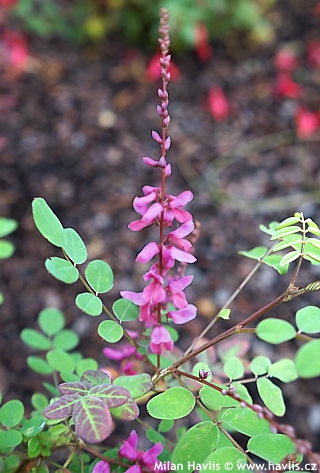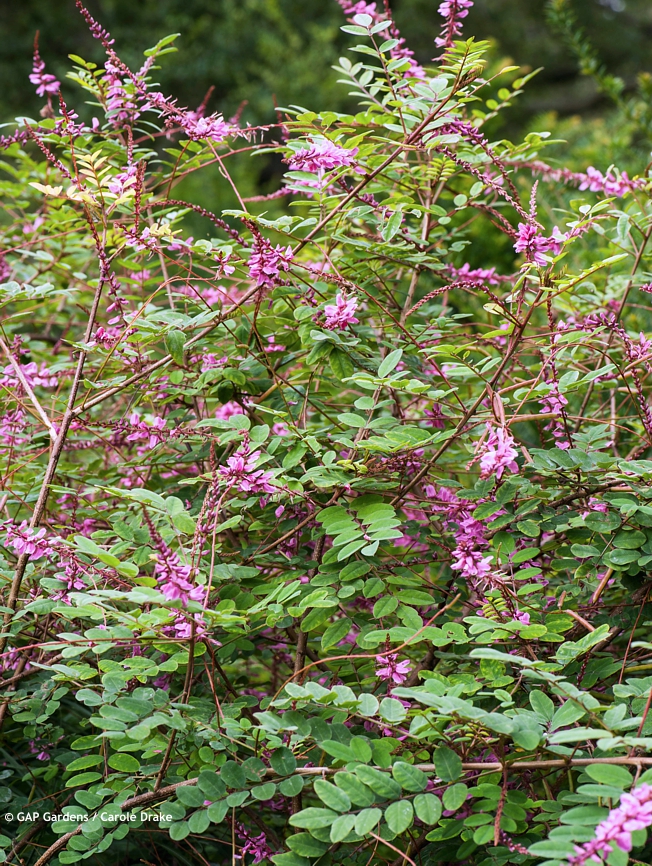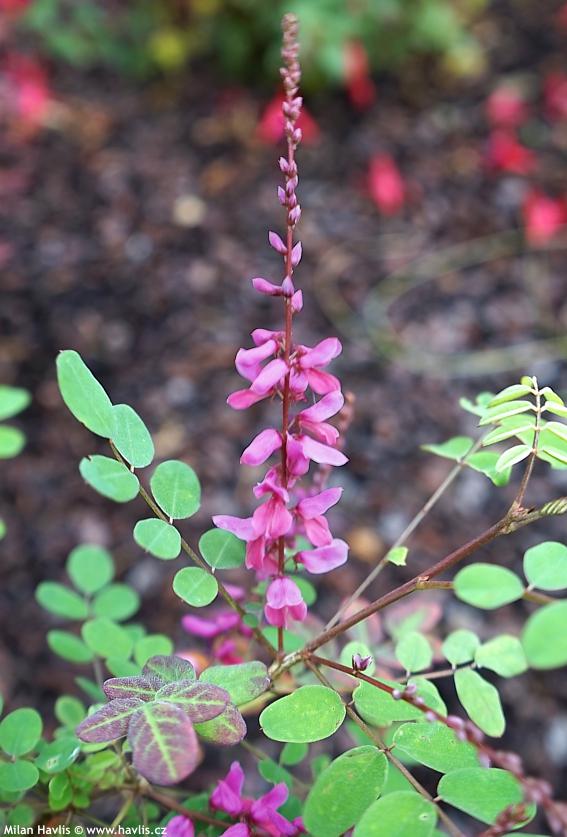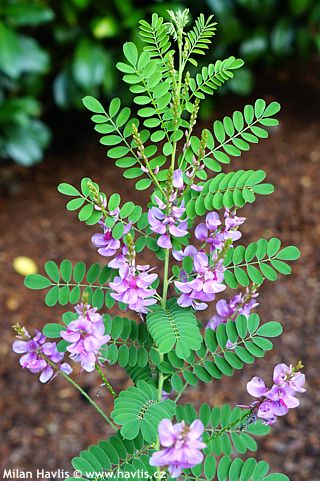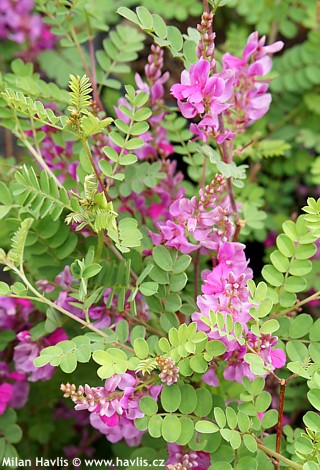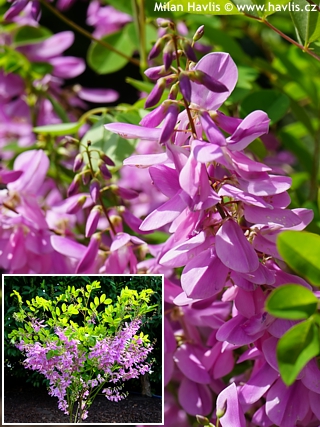Indigofera howellii 'REGINALD CORY' Howell's indigo
size/type
medium-sized shrub,medium-sized shrub
usual height
1,5-2m
usual width
1-1,5m
leaves
deciduous broadleaf
colour of leaves
flowers
showy
colour of flowers
blooming time
June-September
location
full sun
soil type
any (acidic to alkaline)
soil moisture requirements
evenly moist but well-drained
USDA zone (lowest)
5 (down to -29°C)
winter protection
for zone 5+6

for zone 7

categorized
Indigofera
Indigo is a genus of over 700 species from various habitats. The African species indigofera tinctoria was historically the first source of blue dye before lapis lazuli was discovered. Howell's indigo comes from Tibet, southern China and Myanmar (Burma) and is considered to be the longest-flowering indigo species known today. It was first found in the Chinese province of Yunnan in 1895 by a French medicinal missionary Jean-André Soulié, and was named after the botanist Edward Butts Howell (1879-1952), who spent over 30 years in China at the Maritime Customs Office, but spent most of his free time researching its flora. He was fascinated by it, as evidenced by many records, especially letters to his botanical colleagues, equally enthusiastic.Description of the plant:
Reginald Cory is an award-winning indigo variety named after the man of the same name, Reginald Radcliffe Cory (1871-1934), who was one of the eight sponsors of an important collecting expedition to China between 1917-1920 and who, although an amateur gardener, helped build a significant garden complex around the estate in Dyffrny, Wales, which he inherited after his father’s death. The plant first appeared in 1969 at East Bergholt Place in Suffolk, England, where it was grown by Charles C. Elley from cuttings he once received from Reginald Cory without any description. While still called indigofera potaninii, the English Royal Horticultural Society RHS awarded the plant in 2007 the Award of Garden Merit (AGM), and the species was renamed to i. howellii later.It is usually a fast-growing deciduous shrub of upright and airy habit with small leaves and brightly coloured flowers. Those are small, pea-like, deem magenta purple, and are arranged in very slender racemes 7-23 cm long. They bloom tirelessly from June until late summer or early autumn if it is sunny and warm. Pinnate leaves resemble those of a locust but much smaller and more delicate. They consist of 9-17 small, medium green, oval leaves, which turn crimson, orange, and yellow for a short period in autumn. The plant looks extremely exotic and, thanks to its extended flowering period, will adorn any summer garden.
Indigo is best grown in very fertile, perfectly drained soil in full sun, it hates compacted or water-logged ground. Under good conditions you can expect a lovely, bushy and dense shrub with profusion of flowers, creating a typical atmosphere of its home. For best results it should be cut back every spring to encourage new growths (like buddleja or caryopteris – remove 70-80% of previous year’s growths). Keep it mulched all year as it hates long-lasting drought. Hardy to about -29 °C (USDA zone 5) but is supposed to take a few degrees lower and acts like a perennial if the top is killed by frost, coming back from its roots.
Last update 23-11-2021
QUICK PRICE OVERVIEW
CURRENTLY SOLD OUT
WANT TO TRY A SIMILAR PLANT?












